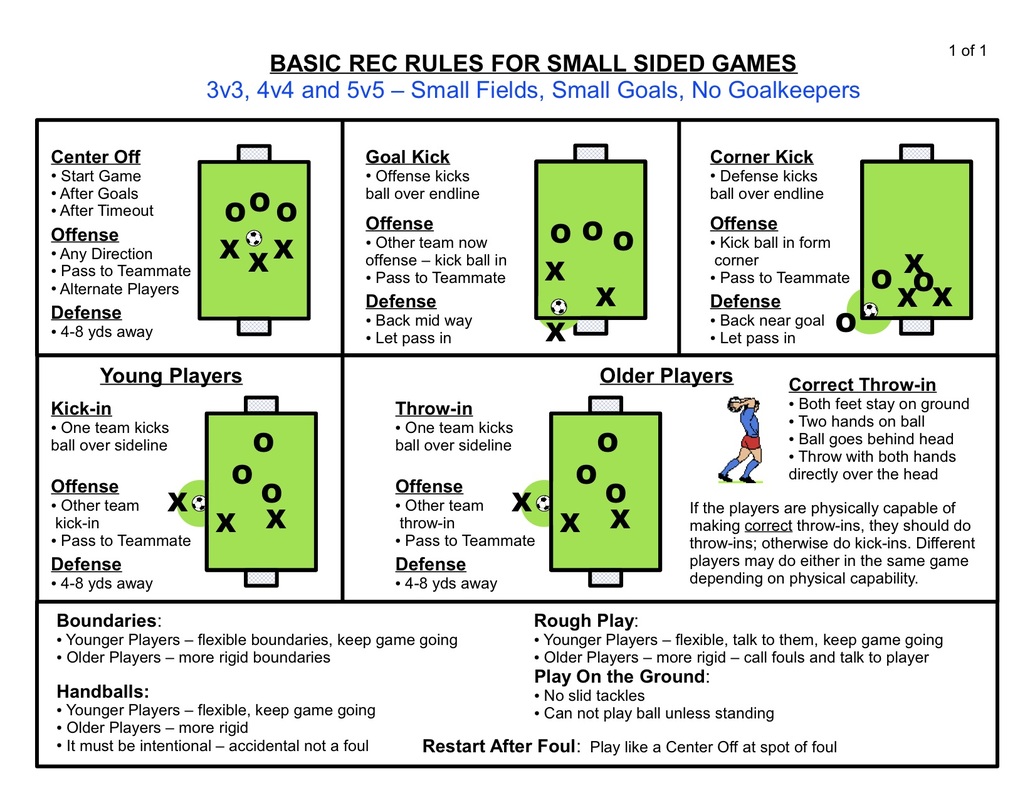STOP coaching and let them PLAY!
Let them Experiment....All players need to master the ball at an early age. The first skill, dribbling, involves using all parts of the foot, combined with body swerves to maneuver the ball to beat an opponent. Dribbling is the only skill for developing confidence on the ball. Encourage dribbling at the younger ages. Dribbling, at the younger ages, is the child’s attempt to gain control over the ball. Controlling the ball is the foundational element that every other skill in soccer is built upon. Although controlling the ball may seem to be a simple task, it actually takes an enormous amount of the child’s energy. Do not expect him or her to look to pass or to pass with any level of competence or awareness, until he or she has first mastered this skill. Given this, one of the difficulties for coaches of young players is to conduct training sessions that involve fun and repetition but are not boring or tedious.
Consider these two points:
1) Children from about age 6 to 12 have an almost limitless capacity to learn body movement and coordination.
2) At the same time, their intellectual capacity to understand spatial concepts like positions and group play is limited. Work to their strengths. Many kids who have been involved in organized soccer will often look to kick the ball down field as their first option. They have been taught that the best way to keep from making a “mistake” is to kick it away as fast as possible. For this reason, it is crucial for the coach to continually encourage the players to make dribbling their first option. It may also help to make the players take at least two touches on the ball before they can look to pass. Remember, making mistakes at these early ages is a very important part of the player’s learning and development. Encourage risk-taking and applaud the effort.
1) Children from about age 6 to 12 have an almost limitless capacity to learn body movement and coordination.
2) At the same time, their intellectual capacity to understand spatial concepts like positions and group play is limited. Work to their strengths. Many kids who have been involved in organized soccer will often look to kick the ball down field as their first option. They have been taught that the best way to keep from making a “mistake” is to kick it away as fast as possible. For this reason, it is crucial for the coach to continually encourage the players to make dribbling their first option. It may also help to make the players take at least two touches on the ball before they can look to pass. Remember, making mistakes at these early ages is a very important part of the player’s learning and development. Encourage risk-taking and applaud the effort.
IMPORTANT! At the younger ages (4 to about 10), soccer is not a team sport. On the contrary, it is a time for children to develop their individual relationship with the ball. The fact that younger children are placed into team environments is not their fault. Do not demand that the more confident players share the ball, encourage them to be creative and go to goal. Do the same with the rest of your players. Work to bring all your players up to that level of confidence and comfort with the ball. Coaches should avoid the impulse to “coach” their players from “play to play” in order to help them win the match. Coaches should not be telling the young players (PreK – Grades 3/4) to “pass rather than dribble,” or to “stay in their positions”. Rather talk about shape....Playing with 3 players their shape should be a triangle on the field. Playing with 4 players there shape should be a diamond on the field. This will eventually make sense for them....



